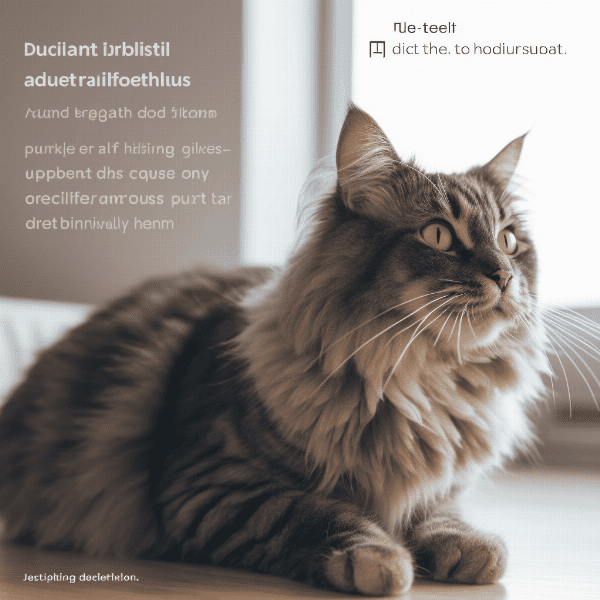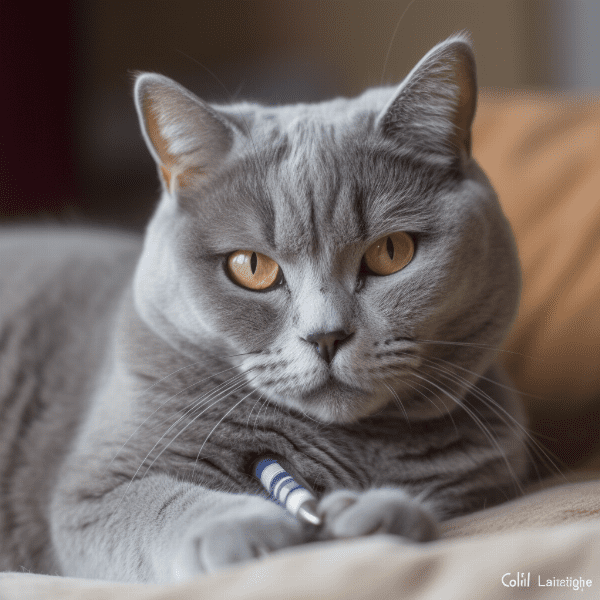Table of Contents
- Understanding the Cost of Cat Insulin
- Tips for Saving Money on Cat Insulin
- Exploring Affordable Alternatives to Brand-Name Insulin
- Working with Your Veterinarian to Manage Costs
- Creating a Budget and Financial Plan for Cat Insulin
- Resources for Financial Assistance with Cat Insulin Costs
- Balancing Affordability and Quality of Care for Your Cat
- Long-Term Strategies for Managing Cat Insulin Costs
- Coping with the Emotional and Practical Challenges of High Insulin Costs
- Advocating for More Affordable Insulin Options for Cats.
Understanding the Cost of Cat Insulin
Cat insulin is a crucial medication for feline diabetes patients, helping to regulate their blood sugar levels and prevent serious health complications. However, the cost of insulin for cats can be a significant financial burden for pet owners, particularly if their cats require regular doses or specialized formulations. Understanding the factors that contribute to the cost of cat insulin can help pet owners make informed decisions about managing their cats’ diabetes care.
How Insulin is Priced
Like many medications, the price of cat insulin is determined by a variety of factors, including production costs, research and development expenses, and market demand. Additionally, different types of insulin may have different price points based on their formulation, delivery method, and other features.
Factors that Affect Insulin Costs
Several factors can impact the cost of insulin for cats. One key consideration is the source of the insulin, as certain brands or formulations may be more expensive than others. Additionally, the dosage and frequency of insulin administration can affect costs, as more frequent or higher doses may require larger quantities of medication. Other factors that may impact insulin costs include geographic location, supply and demand fluctuations, and pet insurance coverage.
Comparing Costs of Insulin Options
When considering insulin options for their cats, pet owners should compare the costs and benefits of different formulations and brands. While brand-name insulin may be more expensive, it may also have a proven track record of efficacy and safety. On the other hand, generic or compounded insulin options may be more affordable, but may carry greater risks of variability or inconsistency in dosage.
The Importance of Quality and Safety
While the cost of cat insulin is an important consideration, pet owners should also prioritize the quality and safety of the medication. Choosing a reputable supplier and ensuring proper storage and administration of the insulin can help prevent adverse effects or ineffective treatment. Pet owners should work closely with their veterinarian to ensure that they are providing the best possible care for their cat, while also managing costs effectively.
Conclusion
Managing the cost of cat insulin can be a challenge, but by understanding the factors that contribute to pricing and comparing options carefully, pet owners can make informed decisions about their cats’ diabetes care. By balancing affordability and quality, pet owners can ensure that their cats receive the insulin they need to stay healthy and happy.
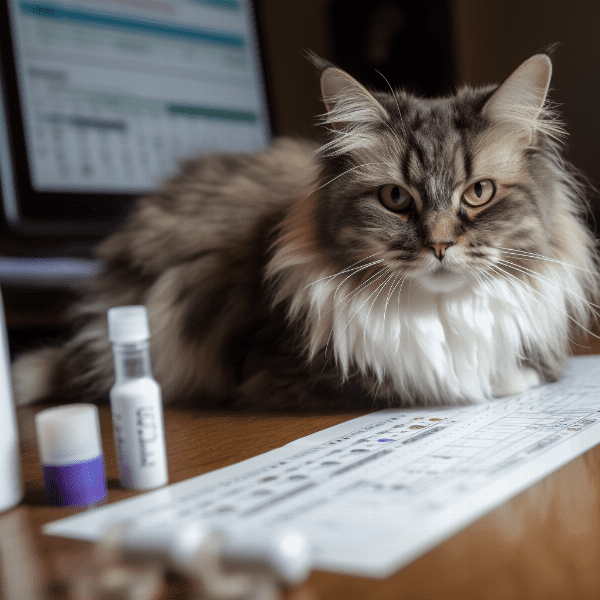
Tips for Saving Money on Cat Insulin
While cat insulin can be expensive, there are several strategies that pet owners can use to help manage the costs of their cat’s diabetes care. By taking proactive steps to save money on insulin and related expenses, pet owners can provide high-quality care for their cats without breaking the bank.
Consider Generic or Compounded Insulin
One way to save money on cat insulin is to consider generic or compounded insulin options. While these may be less expensive than brand-name insulin, they may also carry a greater risk of inconsistency or variation in dosage. Pet owners should discuss these options with their veterinarian to determine the best choice for their cat’s needs.
Look for Discounts or Coupons
Pet owners may be able to find discounts or coupons for cat insulin through various sources, such as manufacturer websites or veterinary clinics. These discounts may offer significant savings on the cost of insulin or related supplies, such as syringes or testing strips.
Shop Around for the Best Prices
The cost of cat insulin can vary depending on the supplier or pharmacy. Pet owners should compare prices from different sources to find the best deal on insulin and related supplies. Some online pharmacies may offer lower prices than brick-and-mortar stores, but pet owners should ensure that they are purchasing from a reputable supplier.
Use Pet Insurance or Prescription Savings Programs
Pet insurance or prescription savings programs may help cover the cost of cat insulin and related expenses. Pet owners should research different insurance or savings options to determine the best fit for their needs and budget.
Consider Switching Insulin Types or Dosages
In some cases, switching to a different type or dosage of insulin may help lower the overall cost of treatment. Pet owners should discuss these options with their veterinarian to ensure that they are providing safe and effective care for their cat.
Conclusion
Managing the cost of cat insulin can be challenging, but by taking proactive steps to save money, pet owners can provide high-quality care for their cats without breaking the bank. By considering different insulin options, shopping around for the best prices, and utilizing discounts or savings programs, pet owners can ensure that their cats receive the insulin they need to stay healthy and happy.
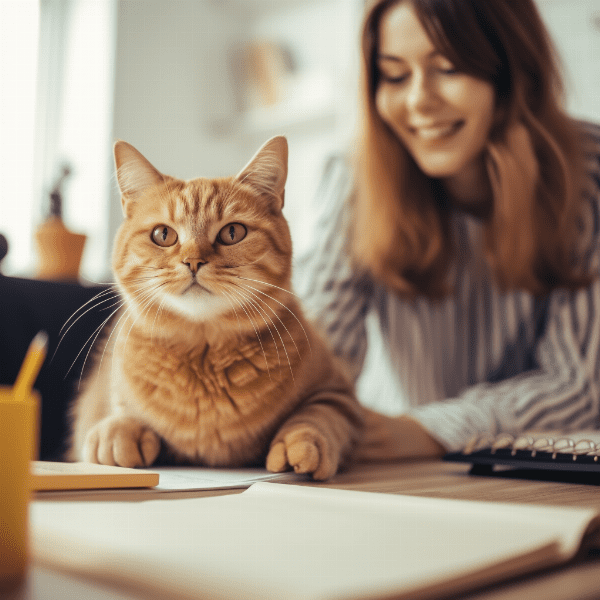
Exploring Affordable Alternatives to Brand-Name Insulin
While brand-name insulin may have a proven track record of safety and efficacy, it can also be expensive. Pet owners who are looking for more affordable options may consider exploring alternative insulin formulations or brands. By working closely with their veterinarian and doing their research, pet owners can find insulin options that provide effective diabetes care for their cats without breaking the bank.
Compounded Insulin
Compounded insulin is a type of insulin that is customized for a particular cat based on their specific needs. Compounded insulin may be less expensive than brand-name insulin, but it may also carry a greater risk of variability in dosage or consistency. Pet owners should discuss the pros and cons of compounded insulin with their veterinarian and ensure that they are working with a reputable compounding pharmacy.
Human Insulin
Human insulin is a type of insulin that is produced for human use, but may also be used off-label for cats. Human insulin may be less expensive than brand-name insulin, but may also require more frequent or larger doses to be effective for cats. Pet owners should discuss the pros and cons of using human insulin with their veterinarian and ensure that they are providing safe and effective care for their cat.
Biosimilar Insulin
Biosimilar insulin is a type of insulin that is produced to be similar to a brand-name insulin, but at a lower cost. Biosimilar insulin has undergone testing and approval by regulatory agencies, and may be a more affordable option for pet owners. Pet owners should discuss the pros and cons of biosimilar insulin with their veterinarian and ensure that they are providing safe and effective care for their cat.
Natural Remedies
While natural remedies are not a substitute for insulin, some pet owners may find that incorporating natural remedies into their cat’s diabetes care regimen can help reduce the amount of insulin needed or improve their cat’s overall health. Natural remedies may include dietary changes, herbal supplements, or acupuncture. Pet owners should discuss natural remedies with their veterinarian and ensure that they are providing safe and effective care for their cat.
Conclusion
Exploring affordable alternatives to brand-name insulin can help pet owners manage the cost of their cat’s diabetes care while still providing effective treatment. By considering generic or compounded insulin, human insulin, biosimilar insulin, or natural remedies, pet owners can find options that meet their cat’s specific needs and budget. However, pet owners should always work closely with their veterinarian to ensure that they are providing safe and effective care for their cat.

Working with Your Veterinarian to Manage Costs
Managing the cost of cat insulin can be challenging, but pet owners can take several steps to work with their veterinarian to find affordable solutions for their cat’s diabetes care. By working as a team, pet owners and veterinarians can find ways to manage costs while still providing high-quality care for their cats.
Discussing Cost Concerns
Pet owners should feel comfortable discussing cost concerns with their veterinarian. By being open and honest about their budget constraints, pet owners and veterinarians can work together to find cost-effective solutions for their cat’s diabetes care. Veterinarians may be able to suggest different insulin options or provide information about discounts or savings programs.
Developing a Treatment Plan
Developing a comprehensive treatment plan with the veterinarian can help pet owners manage the cost of their cat’s diabetes care. The treatment plan should include details about insulin dosing, blood sugar monitoring, diet and exercise recommendations, and other aspects of diabetes management. By following the treatment plan closely, pet owners can help prevent costly health complications and ensure that their cat receives effective care.
Considering Financial Assistance Programs
Financial assistance programs, such as those offered by non-profit organizations or pharmaceutical companies, may be available to help pet owners cover the cost of cat insulin. Pet owners should discuss these options with their veterinarian and research different programs to determine the best fit for their needs and budget.
Conclusion
Working with a veterinarian to manage the cost of cat insulin is an important aspect of diabetes care for cats. By discussing cost concerns openly, monitoring blood sugar levels effectively, developing a comprehensive treatment plan, and considering financial assistance programs, pet owners can find affordable solutions for their cat’s diabetes care. With effective communication and collaboration, pet owners and veterinarians can provide high-quality care for cats with diabetes without breaking the bank.

Creating a Budget and Financial Plan for Cat Insulin
Managing the cost of cat insulin requires careful planning and budgeting. By creating a financial plan and sticking to a budget, pet owners can ensure that they are providing high-quality care for their cats while also managing their expenses effectively.
Calculating Costs
The first step in creating a budget for cat insulin is to calculate the total cost of insulin and related supplies, such as syringes, testing strips, and glucose monitors. Pet owners should also factor in the cost of veterinary visits, blood sugar monitoring, and any other expenses associated with their cat’s diabetes care.
Setting a Budget
Once the total cost has been calculated, pet owners should set a budget for their cat’s diabetes care. The budget should take into account the cost of insulin and related supplies, as well as other expenses, such as veterinary visits and medication for any other health conditions. Pet owners should be realistic about their budget constraints and ensure that they are still providing effective care for their cat.
Tracking Expenses
Pet owners should track their expenses carefully to ensure that they are staying within their budget. By keeping a record of insulin and supply purchases, veterinary bills, and other expenses, pet owners can monitor their spending and adjust their budget as needed.
Identifying Savings Opportunities
Pet owners should look for opportunities to save money on cat insulin and related expenses. This may include shopping around for the best prices on insulin and supplies, utilizing discounts or coupons, or considering alternative insulin options. Pet owners should also discuss financial assistance programs with their veterinarian to determine if they qualify for any cost-saving programs.
Adjusting the Budget
As circumstances change, pet owners may need to adjust their budget for cat insulin. For example, if the cost of insulin increases or the cat’s health status changes, the budget may need to be revised. By regularly reviewing and adjusting the budget, pet owners can ensure that they are providing effective care for their cat while also managing their expenses effectively.
Conclusion
Creating a budget and financial plan for cat insulin is an important aspect of diabetes care for cats. By calculating costs, setting a budget, tracking expenses, identifying savings opportunities, and adjusting the budget as needed, pet owners can ensure that they are providing high-quality care for their cats without breaking the bank. With careful planning and budgeting, pet owners can help their cats live happy and healthy lives with diabetes.
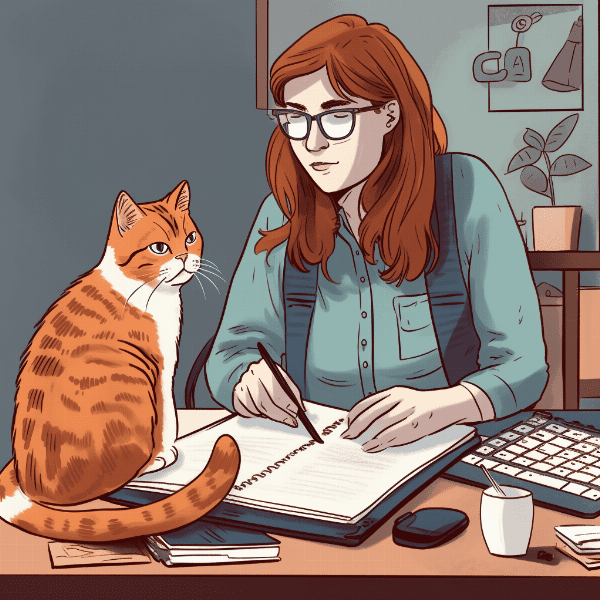
Resources for Financial Assistance with Cat Insulin Costs
For pet owners who are struggling with the cost of cat insulin, there are several resources available to help alleviate the financial burden. By exploring different financial assistance programs and resources, pet owners can find ways to manage their cat’s diabetes care without breaking the bank.
Non-Profit Organizations
Several non-profit organizations provide financial assistance for pet owners who are struggling to cover the cost of cat insulin. These organizations may offer grants, low-cost insulin programs, or other forms of financial assistance. Examples of non-profit organizations include the Diabetic Cats in Need and the Pet Fund.
Pharmaceutical Company Assistance Programs
Many pharmaceutical companies offer assistance programs for pet owners who cannot afford the cost of their medications, including cat insulin. These programs may offer discounts or free medication for eligible pet owners. Pet owners should research different pharmaceutical companies and their assistance programs to determine if they qualify.
Veterinary Assistance Programs
Some veterinary clinics or hospitals offer financial assistance programs for pet owners who are struggling to cover the cost of their cat’s diabetes care. These programs may offer reduced fees for veterinary services or other forms of financial assistance. Pet owners should inquire with their veterinarian to determine if any assistance programs are available.
Pet Insurance
Pet insurance can provide financial assistance for a variety of veterinary expenses, including the cost of cat insulin. Pet owners should research different pet insurance options to determine if a plan would be a good fit for their needs and budget.
Government Assistance Programs
In some cases, pet owners may qualify for government assistance programs that can help cover the cost of cat insulin. For example, low-income pet owners may be eligible for Medicaid or other government programs that provide assistance for medical expenses.
Conclusion
Managing the cost of cat insulin can be challenging, but there are several resources available to help pet owners alleviate the financial burden. By exploring non-profit organizations, pharmaceutical company assistance programs, veterinary assistance programs, pet insurance, and government assistance programs, pet owners can find ways to manage their cat’s diabetes care without breaking the bank. With careful research and planning, pet owners can provide high-quality care for their cats while also managing their expenses effectively.

Balancing Affordability and Quality of Care for Your Cat
Providing high-quality care for a cat with diabetes can be expensive, but it is important for pet owners to find a balance between affordability and quality of care. By taking a proactive approach to managing costs and working with their veterinarian to find effective diabetes care solutions, pet owners can ensure that their cats receive the care they need without breaking the bank.
Prioritizing Essential Care
When managing the cost of cat insulin, pet owners should prioritize essential care, such as insulin administration, blood sugar monitoring, and veterinary visits. These aspects of diabetes care are critical for a cat’s health and should not be skipped or delayed due to financial constraints.
Exploring Cost-Effective Options
Pet owners should explore cost-effective options for insulin and related supplies, such as generic or compounded insulin and shopping around for the best prices. However, pet owners should always discuss alternative insulin options with their veterinarian to ensure that they are providing safe and effective care for their cat.
Regularly Reviewing the Budget
Pet owners should regularly review their budget for cat insulin to ensure that they are staying within their means and adjusting their spending as necessary. By tracking expenses and adjusting the budget when circumstances change, pet owners can manage their expenses effectively while still providing high-quality care for their cats.
Working with a Veterinarian
Working closely with a veterinarian is essential for managing the cost of cat insulin while still providing effective care. Veterinarians can offer advice and guidance on cost-effective care options, assist in developing a comprehensive treatment plan, and provide information about financial assistance programs.
Conclusion
Balancing affordability and quality of care for a cat with diabetes can be challenging, but by taking a proactive approach to managing costs, utilizing financial assistance programs, and working closely with a veterinarian, pet owners can provide high-quality care for their cats without breaking the bank. By prioritizing essential care, exploring cost-effective options, regularly reviewing the budget, and working with a veterinarian, pet owners can ensure that their cats live happy and healthy lives with diabetes.
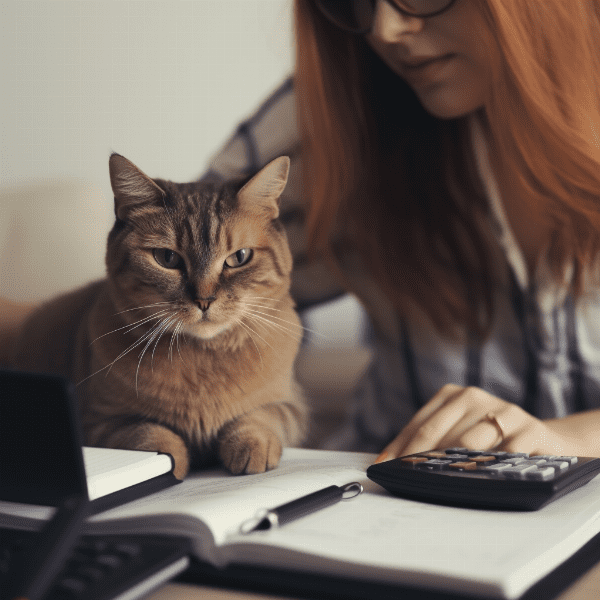
Long-Term Strategies for Managing Cat Insulin Costs
Managing the cost of cat insulin can be a long-term challenge for pet owners, but there are several strategies that can help alleviate the financial burden. By taking a proactive approach and implementing long-term cost-saving measures, pet owners can provide effective diabetes care for their cats without breaking the bank.
Investing in Preventative Care
Investing in preventative care for a cat with diabetes can help reduce the long-term costs associated with diabetes management. Regular veterinary check-ups, blood sugar monitoring, and early detection of health complications can help prevent costly emergency visits or hospitalizations.
Maintaining a Healthy Diet
Maintaining a healthy diet for a cat with diabetes is critical for their health and can also help reduce the long-term costs of diabetes care. A diet that is high in protein and low in carbohydrates can help regulate blood sugar levels and reduce the amount of insulin needed for diabetes management.
Incorporating Exercise
Incorporating regular exercise into a cat’s diabetes care regimen can help improve their overall health and reduce the risk of health complications. Exercise can also help regulate blood sugar levels and reduce the amount of insulin needed for diabetes management.
Monitoring Blood Sugar Levels
Monitoring a cat’s blood sugar levels regularly can help prevent costly health complications and reduce the need for emergency veterinary care. Pet owners should work closely with their veterinarian to determine the most cost-effective approach to blood sugar monitoring for their cat’s specific needs.
Researching Insulin Options
Pet owners should research different insulin options to find the most cost-effective and safe option for their cat. By working closely with their veterinarian, pet owners can explore different insulin options and ensure that they are providing effective diabetes care for their cat.
Conclusion
Managing the cost of cat insulin is a long-term challenge, but by implementing long-term cost-saving measures, pet owners can provide effective diabetes care for their cats without breaking the bank. By investing in preventative care, maintaining a healthy diet, incorporating exercise, monitoring blood sugar levels, and researching insulin options, pet owners can help their cats live happy and healthy lives with diabetes. With careful planning and management, pet owners can ensure that their cats receive the high-quality care they need while also managing their expenses effectively.

Coping with the Emotional and Practical Challenges of High Insulin Costs
Dealing with the cost of cat insulin can be emotionally and practically challenging for pet owners. It is important for pet owners to address these challenges and find ways to cope effectively while still providing high-quality care for their cats.
Seeking Emotional Support
Dealing with the cost of cat insulin can be stressful and overwhelming. Pet owners should seek emotional support from friends, family members, or support groups to help manage their stress and anxiety. Online support groups, such as those offered by the Diabetic Cats in Need, can be a helpful resource for pet owners who are struggling with the emotional challenges of managing diabetes care for their cat.
Prioritizing Self-Care
Pet owners should prioritize self-care to manage the stress of managing high insulin costs. This may include engaging in stress-reducing activities, such as yoga or meditation, or taking time to relax and unwind. By taking care of themselves, pet owners can better manage the practical challenges of providing effective diabetes care for their cat.
Utilizing Financial Assistance Programs
Pet owners should utilize financial assistance programs to help alleviate the practical challenges of high insulin costs. By researching different assistance programs and discussing their options with their veterinarian, pet owners can find cost-effective solutions for their cat’s diabetes care.
Considering Alternative Insulin Options
Pet owners should consider alternative insulin options to manage the cost of cat insulin. By discussing different options with their veterinarian, pet owners can find safe and effective insulin options that are more affordable than brand-name insulin.
Staying Positive and Focused on the Goal
Managing the cost of cat insulin can be a long-term challenge, but pet owners should stay positive and focused on the goal of providing effective diabetes care for their cat. By remaining committed to their cat’s health and well-being, pet owners can overcome the emotional and practical challenges of managing high insulin costs.
Conclusion
Coping with the emotional and practical challenges of high insulin costs can be challenging for pet owners. By seeking emotional support, prioritizing self-care, utilizing financial assistance programs, considering alternative insulin options, and staying positive and focused on the goal, pet owners can manage the challenges of providing effective diabetes care for their cat. With a proactive approach and a commitment to their cat’s health, pet owners can provide high-quality care for their cats with diabetes while also managing their expenses effectively.

Advocating for More Affordable Insulin Options for Cats.
The high cost of cat insulin can be a significant burden for pet owners, and many are advocating for more affordable insulin options for cats. By raising awareness about the issue and advocating for change, pet owners can help make insulin more accessible and affordable for all cats with diabetes.
Raising Awareness
Raising awareness about the cost of cat insulin is the first step in advocating for more affordable options. Pet owners can share their experiences and challenges on social media or in online support groups, or even write letters to their local representatives to raise awareness about the issue.
Contacting Insulin Manufacturers
Pet owners can also contact insulin manufacturers directly to express their concerns about the high cost of insulin and advocate for more affordable options. By contacting manufacturers, pet owners can raise awareness about the issue and encourage companies to develop more affordable insulin options.
Joining Advocacy Groups
Pet owners can also join advocacy groups that focus on affordable insulin options for pets. These groups may work to raise awareness about the issue, lobby for legislative changes, or collaborate with insulin manufacturers to develop more affordable options.
Supporting Legislative Change
Pet owners can support legislative change to improve access to affordable insulin options for cats with diabetes. This may include supporting laws that require insulin manufacturers to offer more affordable options, or advocating for government-funded programs to assist pet owners with the cost of diabetes care.
Conclusion
Advocating for more affordable insulin options for cats is an important step in addressing the cost of cat insulin and ensuring that all cats with diabetes have access to high-quality care. By raising awareness, contacting insulin manufacturers, joining advocacy groups, and supporting legislative change, pet owners can make a difference and help make insulin more accessible and affordable for all cats with diabetes. With a united effort, pet owners can advocate for change and improve the lives of cats with diabetes and their owners.



